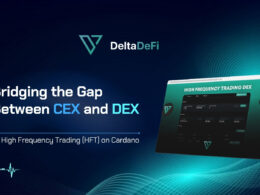Djed is the stablecoin developed by IOG, the company that created the Cardano blockchain technology. IOG has described Djed as “an algorithmic stablecoin protocol that behaves like an autonomous bank that buys and sells stablecoins for a price in a range that is linked to a target price.”
This article has two parts, the first introduces the Djed protocol, the second analyzes its operation with practical examples, and compares it with other stablecoins.
Since the early 1970s, the United States government decided to abandon the gold standard, and end the convertibility of paper money with gold. Most countries followed him in the decision. That means that current fiat currencies are not backed 100% by gold.
This lack of parity allows Central Banks to increase or reduce money circulating in the economy, according to the financial context and arbitrary decisions of the rulers.
Fiat money has stable purchasing power in developed countries in the short term, but may lose value in the long term. With an accumulated inflation of 72.89% from the year 2000 until today, a dollar today only buys 57.84% of what it could buy in that year, CPI Inflation Calculator.
You can’t imagine 1,000% annual inflation, right? But hey, many developing countries have experienced that loss of monetary value. Worst Cases of Hyperinflation in History.
Fiat currencies are considered stable, mainly that of developed countries, and I suppose it will be because they do not have high volatility, although they all depreciate over time to varying degrees.
Cryptocurrencies have a lot of volatility, which prevents being able to use them as a unit of measurement for trade. That is where stablecoins make their appearance. You can read about them in my article that I leave at the end (1).
In Cardano there are projects of stablecoins(*). An important development for the ecosystem is underway: EMURGO Introduces First USD-Backed Stablecoin for the Cardano Ecosystem. At the time of writing this article, there is already an active stablecoin: Cardano’s First Stablecoin: What You Should Know About iUSD.
(*) Ardana has stopped working on the project.
What is Djed?
The name originates from a pillar shape, djed, which symbolized “stability”. It was one of the most reproduced symbols in Egyptian mythology, and represented the spine of the god Osiris.
Djed is a stable, algorithmic, and over-guaranteed currency to maintain a “cushion” against possible sharp fluctuations in reserve prices. You will have Proof of Reserve on-chain, which will transparently show its circulating supply and how many ADAs are in reserve.
At the time of writing this article, the Djed protocol is in testnet from May 4, 2022, Djed Public Testnet is Live!.
Cardano mainnet stablecoin Djed is scheduled to launch in January 2023, following a successful full audit (*): Update From the Cardano Summit Main Stage: We Have a Date!.
(*) I was unable to find the published audit report, and as of the date of publication of this article, I did not get any responses from the Djed team to my Twitter DM.
The Djed protocol will work like a Central Bank, but without a central issuer, since the protocol controls the amount of coins in circulation according to their reserves, through a decentralized algorithm, thus keeping their value stable. Therefore, no intermediary may misuse deposits.
IOG decided that COTI will be in charge of developing the user interface system, and will operate the integration between users and with the smart contracts for the stablecoin. COTI has partnered with companies, developers, and other players who wish to mint the stablecoin.
After the launch on mainnet, Djed will be integrated with key partners and DEX selected from the 40 signed partnerships:
COTI has its own consensus algorithm, it is not PoW or PoS, it is Proof of Trust (PoT). At the core of COTI’s infrastructure lies the Trustchain, a proprietary consensus algorithm based on machine learning. The Trustchain lies on a multi-DAG (directed acyclic graph) data structure, which works in tandem to drive up scalability, processing over 100,000 transactions per second (TPS). DAG is the most suitable infrastructure for payments due to its scalability and low transaction costs. Read more: What Is COTI?
The Djed algorithm will be backed by ADA, rather than being backed by fiat currencies, such as USDT, USDC or USDA, Emurgo’s new stablecoin.
As I said at the beginning of this article, the gold standard as a reserve standard has been out of use for decades, but let’s see how Djed revives the reserve standard model, with its own algorithm.
How Does The Protocol Work?
With the reserve pattern model, the Djed algorithm will maintain the value of the stablecoin at USD 1. Users will be able to mint Djed by depositing ADA into reserves, and then get their deposit back by returning Djed, at the quoted value of ADA in USD, at the time of the exchange. For example, if the market value of ADA increases to USD 2, the user will receive ₳ 0.5 for $Djed 1.
The Djed minting and burning process will be decentralized and fully automated.
Djeds will be minted when ADAs enter the reserve, and will be burned when ADAs leave, but ADA will NEVER BE BURNED, instead it will be locked in a smart contract.
In this reserve game, there will be the Shen currency, which will play a key role in absorbing the volatility of ADAs, and ensure that there are sufficient reserves.
ADA will be the true reserve, and Shen, also as the reserve currency, will be an intermediate asset to cushion ADA price swings. Faced with a very large drop in the ADA price, Djed would be left without reserves and would not be able to maintain parity with the USD.
Shen will be minted at the initial value of ₳ 1.
The algorithm will redeem Shen (by burning them) and returning ADAs, only if the ratio with Djed is greater than 400%, and will not be able to mint new Shens if that ratio is greater than 800%. This is why it is said that Djed will be over-guaranteed, because for every Djed minted there will be between 4 and 8 Shens in the reserves.
This considerably decreases the risk of Djed losing parity with the USD.
The Djed Protocol includes 3 different fees models as described below:
- Minting Fees
- Burning Fees
- Operational Fee
Both Djed and Shen minting and burning fees will be collected in ADA and allocated to the reserve pool, increasing the reserve ratio. Shen holders will be able to redeem their rewards by burning their Shen.
Operational fees for minting and burning Djed are also paid in ADA, then converted into COTI coin periodically, and will then be streamlined into the COTI Treasury.
The protocol supports two versions of Djed:
- Djed minimal: This version is designed to be as simple, intuitive and direct as possible, without compromising stability. It is currently implemented on the Ergo blockchain as sigmaUSD.
- Extended Djed – This more complex version offers some additional benefits, using a continuous pricing model and dynamic commissions to further incentivize the reserve ratio at an optimal level.
The reason for buying Shen is to earn ADA profit from Djed buyers. People who buy Djed take out loans that pay back in ADA to Shen holders to remove the volatility of ADA, for as long as they hold Djed.
Djed holders pay fees to mint them, and lose opportunity to earn on ADA with rising prices, plus they do not collect delegation rewards in a stakepool, but are covered from ADA price drops, being able to return the Djeds at such times to get more ADAs.
Roadmap
In terms of development, the following milestones are set for 2023:
- Djed 1.1.1 version (minimal Djed) will be launched in January, and will include Vasil hard fork compatibility, and the upgrade of the oracle to support 6 external sources for the $ADA price. This version will be launched as a beta version with a limited amount of liquidity that will be increased in future versions.
- Version 1.2 will be released after, by then, Djed will be using the Vasil features including a reference script which will increase its scalability.
- Djed 1.3 is the extended Djed version that will introduce dynamic fees and prices. In addition, staking will be supported, resulting in significant liquidity provision.
Final Words
The idea of this stablecoin is clear, for three different uses, to allow ADA holders to trade with a stable value, or to keep the value of their funds stable in the long term, or to speculate by arbitrating between ADA and Djed, buying Djed on the ADA price drop and then selling the stablecoin on the rise.
Investors have a new financial tool in the protocol, being able to provide a reservation service with the investment of their ADAs in the purchase of Shen, in exchange for an undetermined variable return, and here the risk is not being able to dispose of their ADAs in a given moment, because the reserves are less than 400% of the currency, and they could not change their Shen.
Djed was specially designed for real use in trading, but the speculative financial component is always present, and only a good protocol design can sustain success over time.
In the next article you will better understand Djed with a practical example, and you will see its virtues compared to other stablecoins.
. . .











